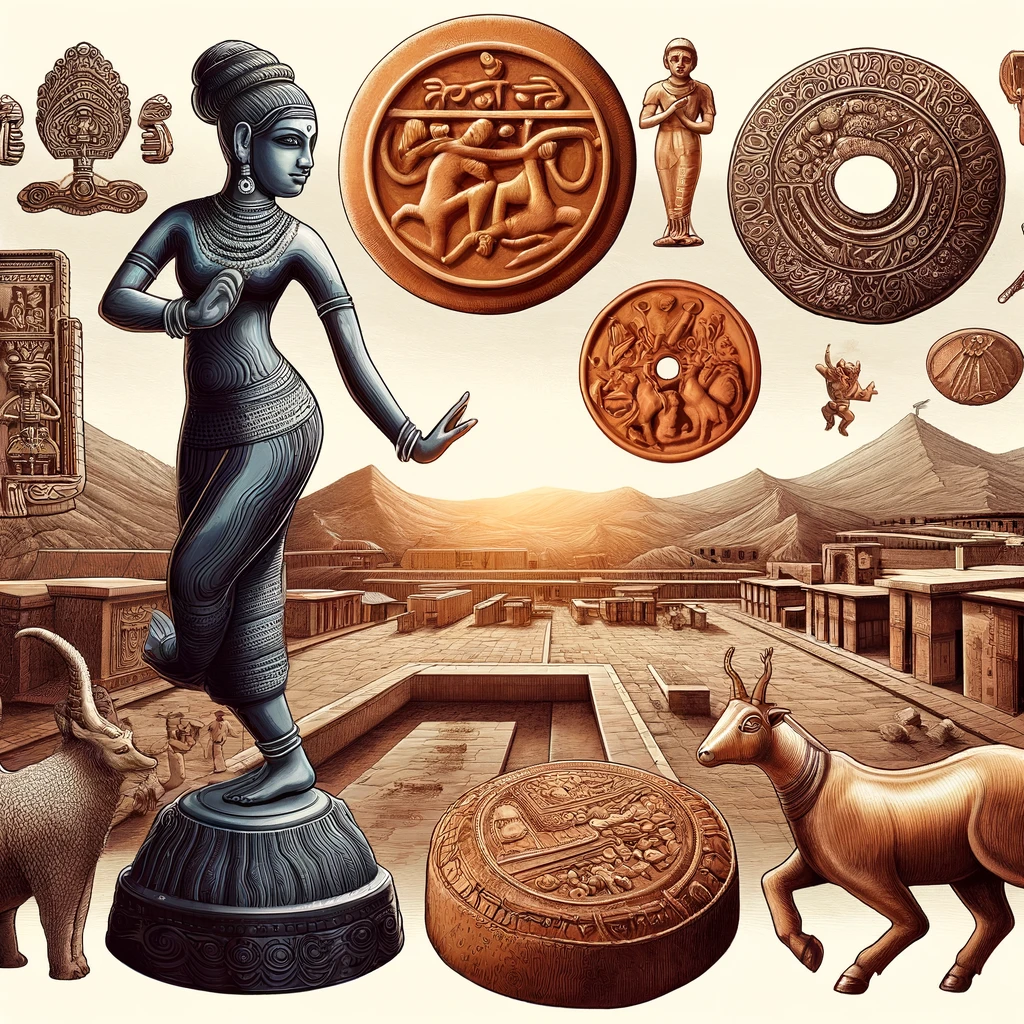The Indus Valley Civilization (IVC), one of the world’s earliest urban cultures, flourished between 2600 BCE and 1900 BCE in what is now Pakistan and northwest India. It is renowned for its advanced city planning, trade networks, and remarkable artifacts that offer deep insights into its cultural, religious, and social aspects. The artistic expressions and cultural artifacts of this civilization reflect not only the aesthetics of the people but also their beliefs, technological advancements, and everyday life. The significance of the Indus Valley Civilization’s art and cultural artifacts can be explored through various dimensions, including craftsmanship, symbolism, religious influences, and their impact on later cultures.
1. Craftsmanship and Artistic Excellence
The artisans of the Indus Valley Civilization displayed extraordinary skill in their craftsmanship. They worked with a variety of materials, including stone, metal, clay, and shell, to create exquisite artifacts. Some of the most notable artistic contributions include:
- Sculptures: The civilization is known for its intricate and realistic sculptures, including the famous Dancing Girl figurine made of bronze. This small yet expressive artifact highlights the mastery of metal casting and human anatomy.
- Seals: Thousands of seals, predominantly made of steatite, have been discovered. These seals often depict animals, humans, and script, which likely had commercial or religious significance.
- Terracotta Figurines: Many terracotta figurines represent deities, animals, and human figures, providing a glimpse into daily life and religious beliefs.
- Beadwork and Ornaments: The people of the Indus Valley were highly skilled in making beads, necklaces, and other jewelry from semi-precious stones, gold, and silver, indicating a flourishing trade network and aesthetic sensibility.
2. Symbolism and Religious Influences
The artistic expressions of the Indus Valley Civilization suggest a deep connection with religious and spiritual beliefs. The seals, sculptures, and pottery designs contain symbols that might represent deities, rituals, and cosmological ideas.
- Pashupati Seal: One of the most significant artifacts, the Pashupati Seal, depicts a seated figure with horns, surrounded by animals. Many scholars associate this figure with Proto-Shiva, indicating early traces of Hinduism.
- Sacred Animals: Animals such as bulls, elephants, and unicorn-like creatures appear frequently on seals and pottery. These may symbolize fertility, power, or mythological significance.
- Mother Goddess Figurines: Numerous terracotta figurines of a female deity suggest that the Indus people worshipped a mother goddess, representing fertility and prosperity.
3. Urban Planning and Architectural Marvels
While not artifacts in the conventional sense, the architectural ingenuity of the Indus Valley Civilization reflects its artistic and cultural advancement. The well-planned cities, including Harappa and Mohenjo-Daro, exhibit sophisticated town planning with grid patterns, drainage systems, and standardized bricks.
- The Great Bath: This large, waterproofed structure found in Mohenjo-Daro is believed to have been used for ritual purification, indicating the importance of water in their religious practices.
- Granaries and Dockyards: The massive granaries and Lothal’s dockyard highlight the civilization’s economic organization and expertise in civil engineering.
- Houses and Streets: The use of uniform brick sizes and carefully planned streets suggests an advanced understanding of urban planning and governance.
4. Trade, Economy, and Cross-Cultural Influences
The artifacts of the Indus Valley Civilization also provide substantial evidence of trade and cultural exchange with Mesopotamia, Central Asia, and other contemporary civilizations.
- Standardized Weights and Measures: The civilization used a precise system of weights and measures, facilitating trade and commerce.
- Seals and Inscriptions: Many seals with undeciphered inscriptions hint at a complex writing system, possibly used for trade documentation.
- Foreign Artifacts: Objects such as Mesopotamian cylinder seals and Persian Gulf shells found in Indus Valley sites indicate international trade.
5. Legacy and Influence on Later Cultures
Although the Indus Valley Civilization eventually declined, its artistic and cultural legacy influenced later South Asian traditions.
- Continuity in Hinduism: Many symbols and religious motifs from the Indus Valley, such as the Pashupati Seal, mother goddess worship, and sacred animals, find parallels in later Hindu traditions.
- Urban Planning Models: The town planning principles of the Indus Valley, including drainage systems and standardized architecture, influenced subsequent Indian civilizations.
- Craftsmanship Traditions: The jewelry-making and metalwork skills of Indus artisans continued in later cultures, evident in the Mauryan and Gupta periods.
Conclusion
The art and cultural artifacts of the Indus Valley Civilization are not merely relics of the past but vital sources of historical and cultural knowledge. They provide valuable insights into the civilization’s advanced craftsmanship, religious beliefs, economic systems, and social organization. Despite the challenges in fully deciphering their script and understanding every aspect of their culture, these artifacts continue to inspire and inform modern interpretations of South Asian history. The legacy of the Indus Valley Civilization remains a testament to the ingenuity and sophistication of one of the world’s earliest urban societies.




